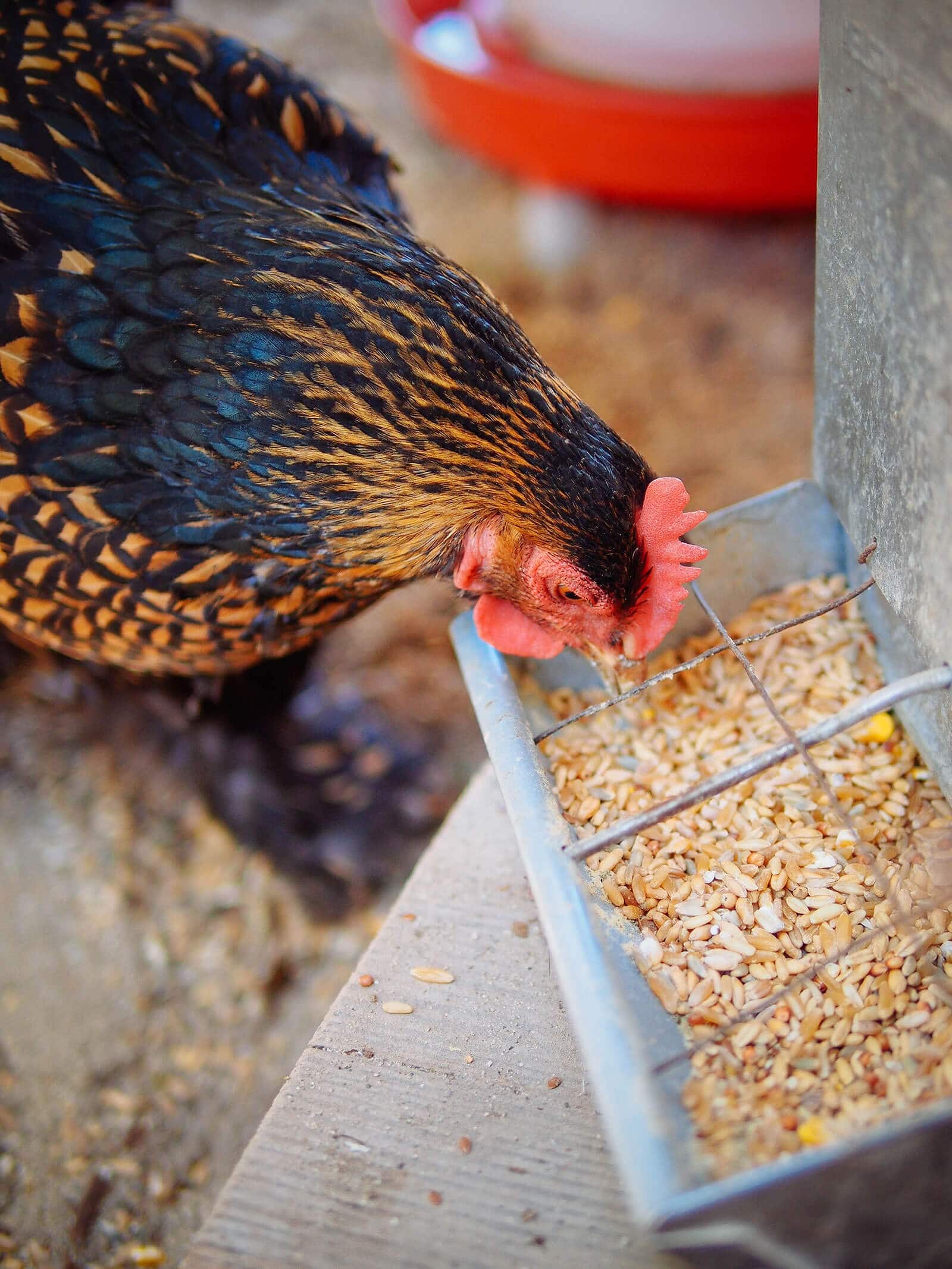Update: Download the Garden Betty Chicken Feed Calculator to easily manage costs, calculate protein content, and formulate your feed on the fly!
I get a lot of emails about one of my most popular posts, Garden Betty’s Homemade Whole Grain Chicken Feed.
Since I started feeding my chickens a whole grain diet in December 2011 (when our first generation of hens were still pullets), they’ve been as happy and healthy as ever, and our most productive layers give us 6 to 7 eggs per week with no anomalies like shell-less eggs.
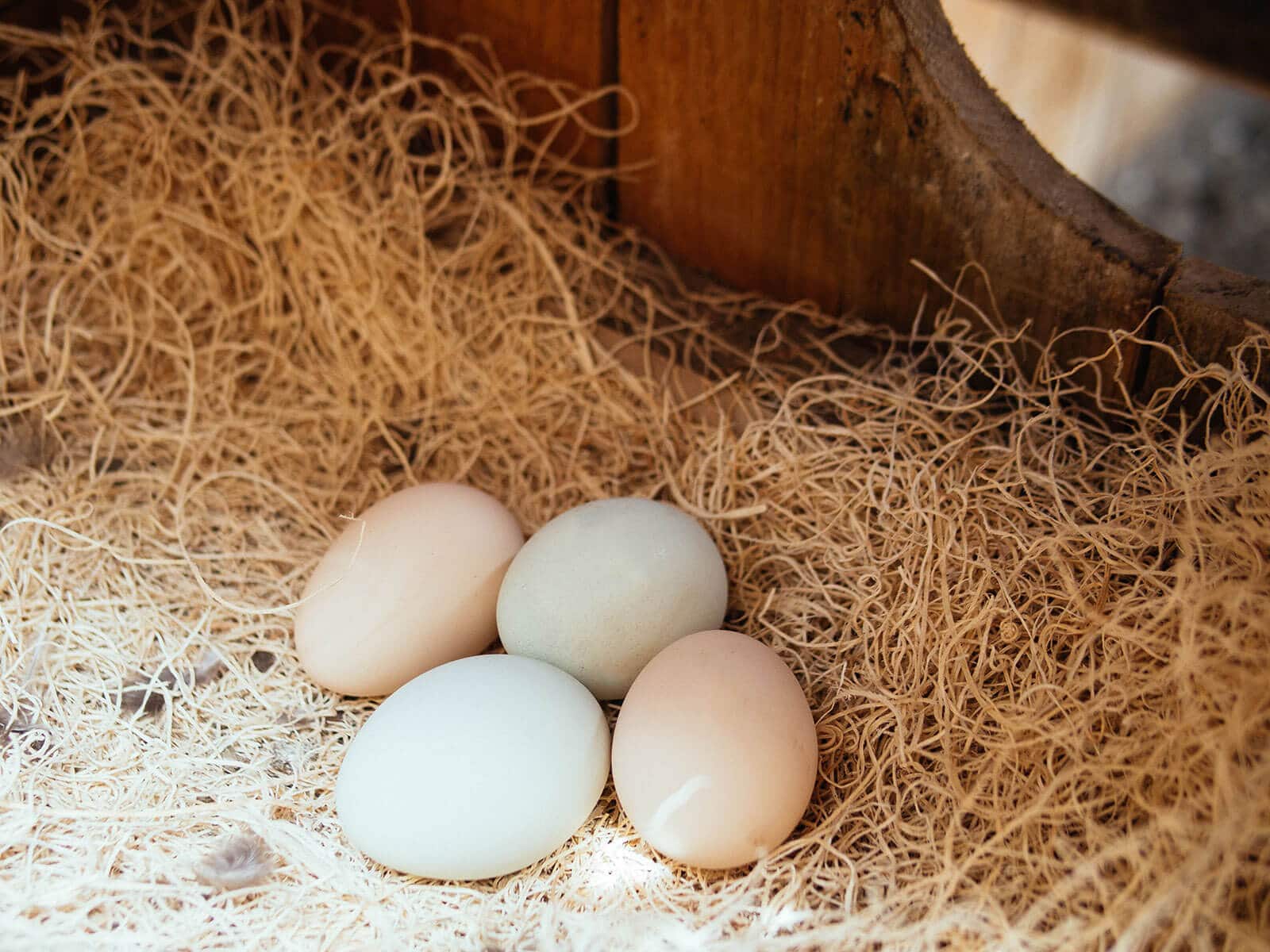
My homemade chicken feed has now been fed to three generations of hens, all with amazing results. Their feathers are soft and glossy, their wings strong and quick, their combs and wattles meaty and well-formed.
They are also the most active, affectionate, and sociable chickens, and they come bounding through the yard as soon as they see us approaching with their food. (We usually ferment their chicken feed.) I love their little personalities!
I’ve made small changes to my DIY chicken feed here and there, depending on what ingredients were in stock at my co-op. I still swear by a whole grain diet (considering how easy and accessible it is in my area), and it seems like many of you are looking to go this route as well.
If you’ve ever wanted to find out how to adapt my feed to baby chicks, or what kind of substitutions can be made to the original recipe, the comments on that page (which I actively monitor and respond to) are a great place to start!
In this post, I’m sharing how I updated my homemade chicken feed recipe with a version I’ve been successfully using for the last several years.
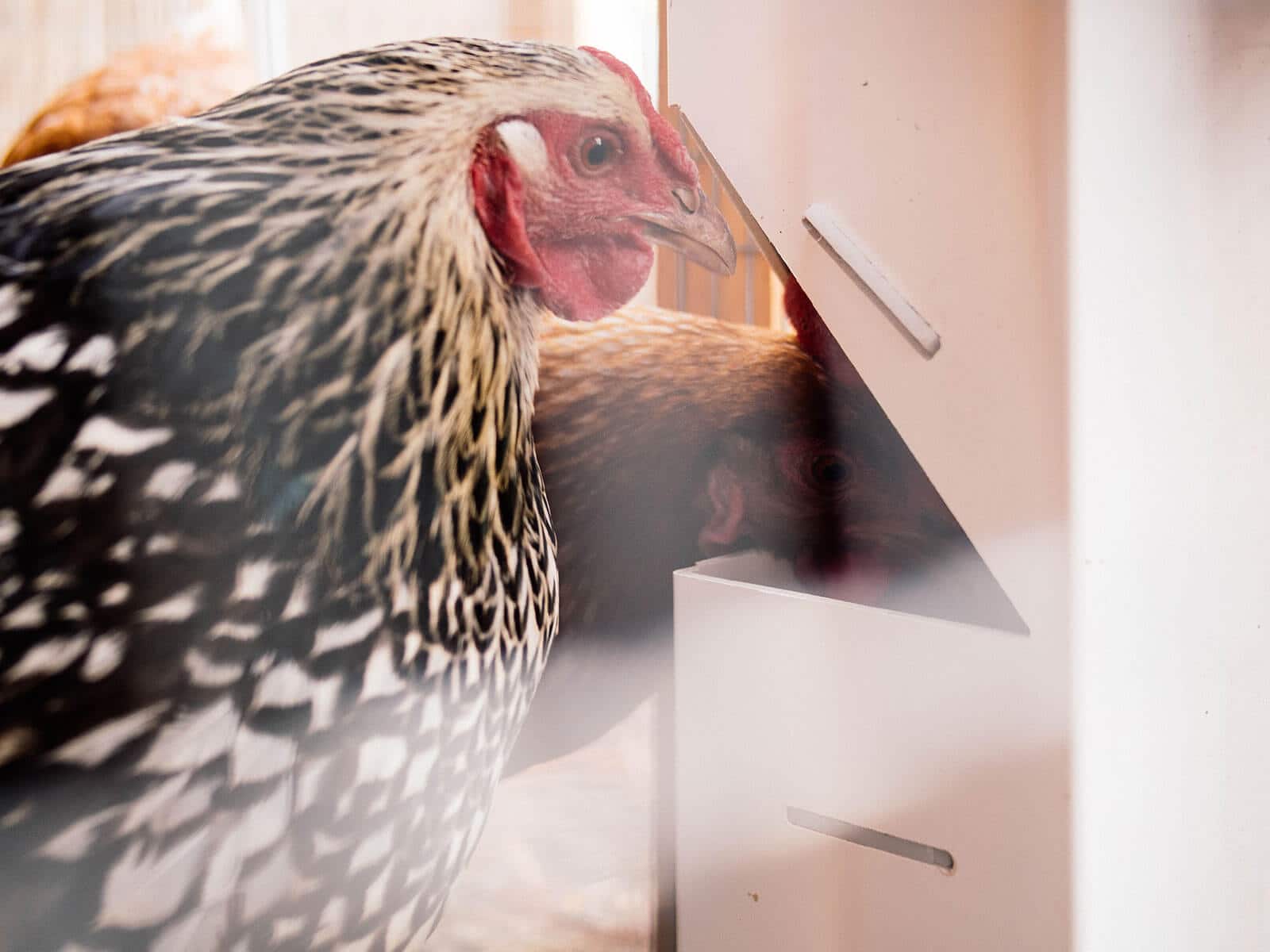
Why a corn-free chicken feed may be a better feed for your flock
One of the most common questions I always get is: How do you make your chicken feed recipe corn-free?
Chicken-keepers want a corn-free feed for any number of reasons, the main one being that corn has little nutritional value compared to many other grains and seeds.
Field corn (the type of corn grown as livestock feed and processed into things like high fructose corn syrup) is also one of the most genetically modified crops in the world.
GMOs weren’t a concern for me as I used human-grade organic corn in my original recipe, but I ended up making a corn-free chicken feed because my original flock stopped eating corn, as well as lentils and kamut. (What can I say? They’re picky little ladies.)
Eliminating corn from the recipe wasn’t a big deal, but I did need to find a protein-rich replacement for the lentils and kamut.
Here’s what I’ve been using…
Disclosure: If you shop from my article or make a purchase through one of my links, I may receive commissions on some of the products I recommend.
High-protein ingredients for homemade corn-free chicken feed
Triticale, a hybrid of wheat and rye, contains 17 percent protein and is an excellent source of energy. It used to be carried by my delivery co-op, Azure Standard (where I buy most of my other bulk grains), but has been hard to find in recent months.
I now source organic triticale from an Oregon supplier, but you can also find conventionally grown triticale from a Florida farm that specializes in pasture seed. Rolled triticale (which can be used interchangeably with triticale berries) is also offered on Amazon occasionally.
My other new ingredient, rye, contains 13 percent protein and something in it makes my chickens go crazy! They gobble the grains out of my hand like it’s candy.
Rye is fairly cheap and easy to find, though the University of Kentucky College of Agriculture suggests feeding rye only to laying hens at peak egg production. (You can substitute many other grains for it in the meantime.)
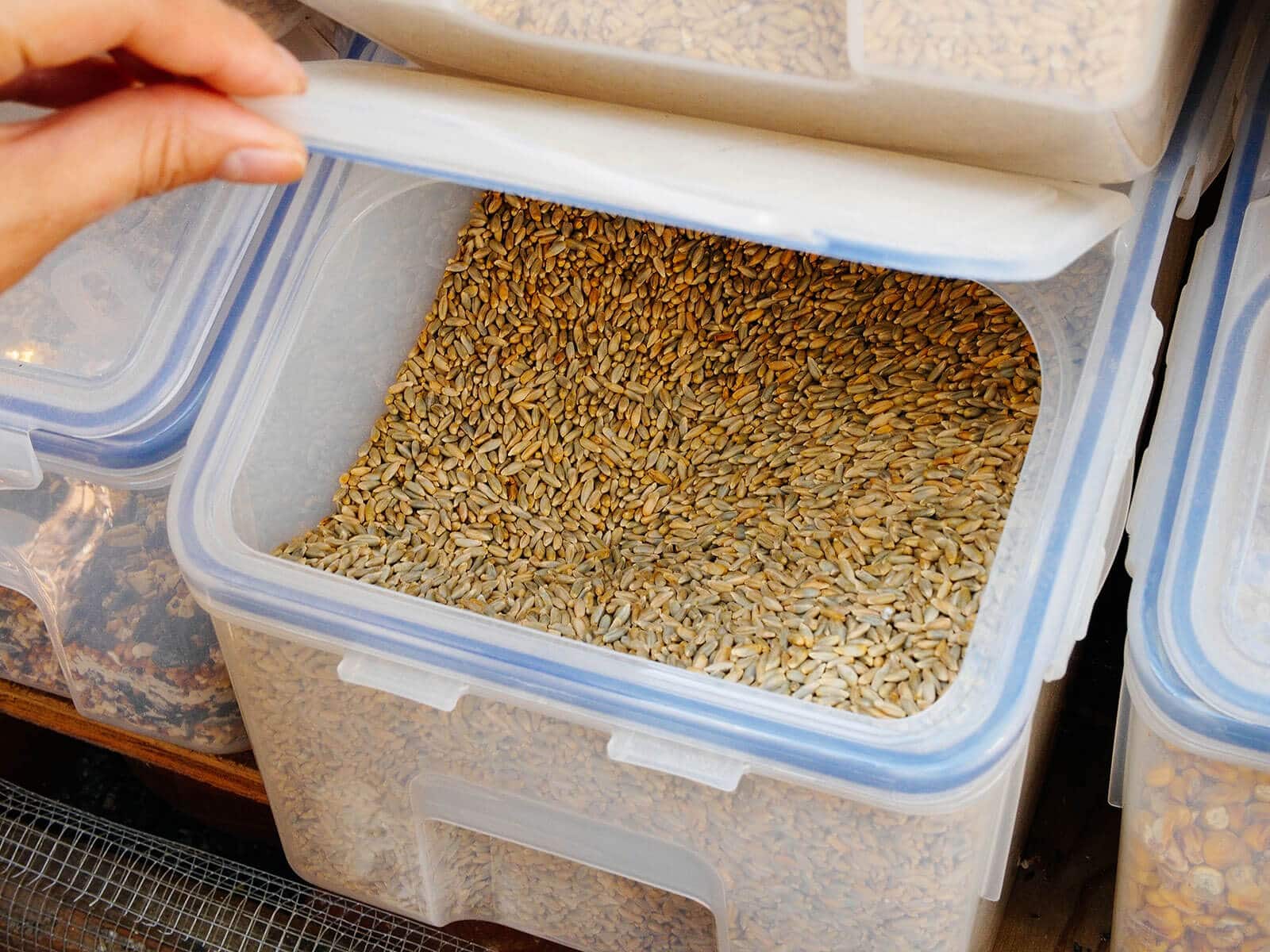
I also increased my sesame seed serving to 2 cups, and kept the rest of the recipe the same.
For many chicken-keepers, the easiest and cheapest source of (non-soy) protein is split peas and field peas, which I would wholeheartedly use if my chickens actually ate legumes. (They’re 50/50 on them, so I usually modify their feed every few months to keep things interesting.)
If your local supplier doesn’t carry soft white wheat berries, you can simply use 6 cups of the more common hard red wheat berries instead.
My updated corn-free chicken feed recipe is still within the 17 percent protein range for layers and still costs the same to feed them.
If you’re having difficulty finding any of the ingredients below, keep in mind that plenty of other grains, seeds, and legumes can be substituted and this recipe is not meant to be a rigid diet for your flock.
You should still be giving your girls a variety of healthy treats, such as fresh greens, dried mealworms, or dried black soldier fly larvae, and spring is the perfect time to let them loose in your garden to help turn over mulch and soil.
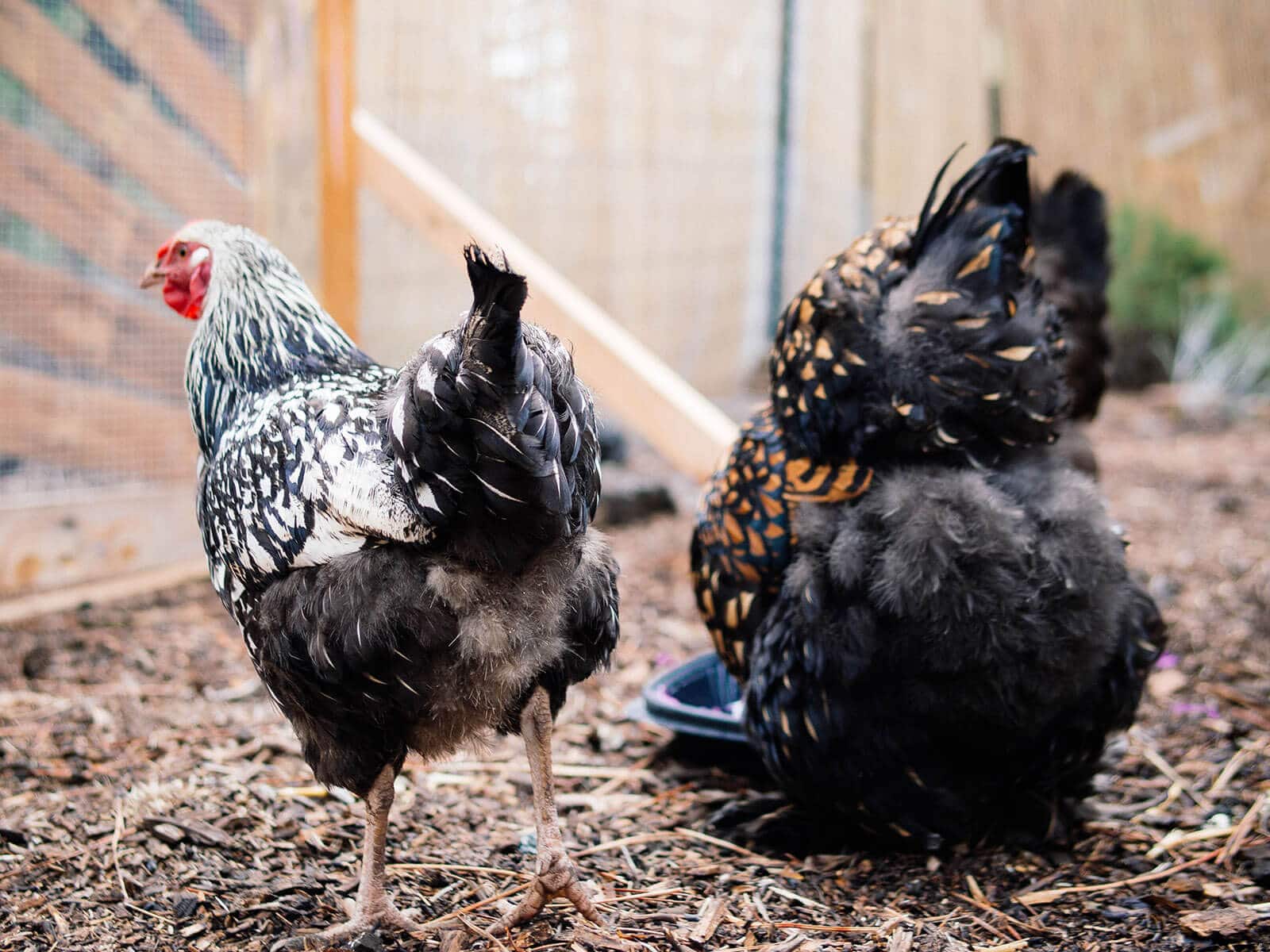
Nutritional supplements for DIY corn-free chicken feed
For added vitamins and minerals, I use brewer’s yeast and kelp granules. Both can be found at well-stocked pet stores and feed stores, health food places, or even online.
Animal-grade supplements are more cost-effective than human-grade, so I recommend going that route if it’s available. You do not need to spend a lot of money to make quality feed!
If you’re not able to source these nutritional supplements for your homemade poultry feed, you can order Fertrell Poultry Nutri-Balancer from Azure Standard, Amazon, or your local feed store, or ask if they carry any other vitamin/mineral premix. (Just follow the directions on the package for proper serving sizes.)
It also might be a good idea to find other chicken-keepers to go in on an order with you, as a 10-pound bag of Nutri-Balancer would last forever unless you have a very large flock.
The girls still get grit and oyster shells in separate containers to peck as they please… but these days, I’ve also been washing and crushing up their eggshells to use in place of the oyster shells when I can’t make it to our local feed store.
With six hens now, there are plenty of eggshells to go around! (We even crush up eggshells to put in our tomato planting holes.)
For more recommendations, as well as information on how all of these grains are beneficial for your flock, check out my original homemade chicken feed recipe and its comments.
Happy formulating!
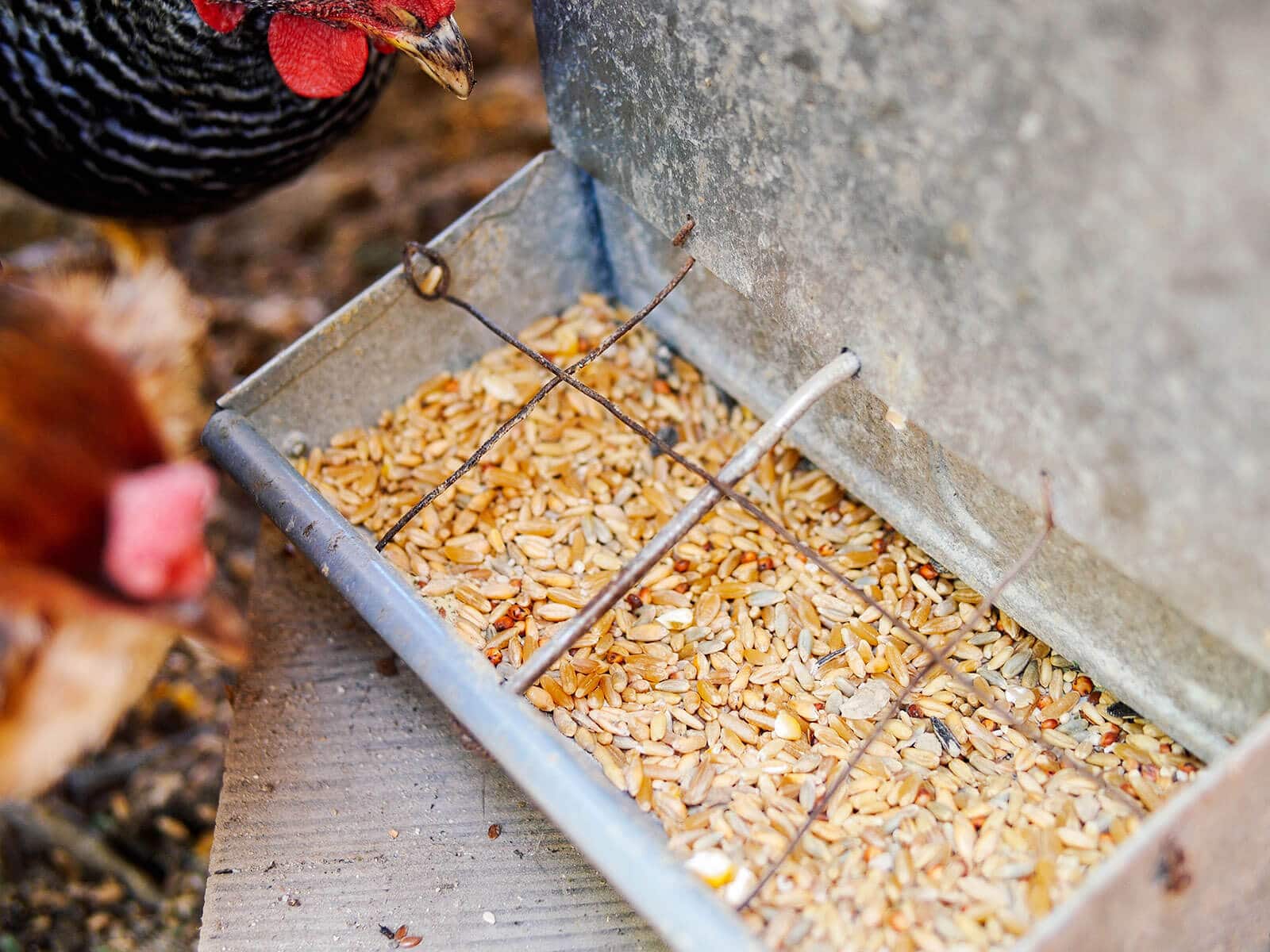
Homemade Soy-Free Corn-Free Chicken Feed With Whole Grains
Makes 8 1/2 pounds (fills 10-pound feeder)
Ingredients
4 cups oat groats
4 cups black oil sunflower seeds
4 cups hard red wheat berries
2 cups soft white wheat berries
2 cups triticale berries
2 cups rye berries
2 cups millet
2 cups sesame seeds
1 cup flax seeds
1/2 cup brewer’s yeast
1/4 cup kelp granules
Free-choice oyster shells (or crushed eggshells)
Free-choice grit
Instructions
Combine all of the ingredients, except the oyster shells and grit, in a small bucket. Pour the mixture into a feeder.
Put the oyster shells and grit in separate containers and offer them free-choice to your chickens to eat as they wish.
Homemade Corn-Free Soy-Free Chicken Feed With Whole Grains
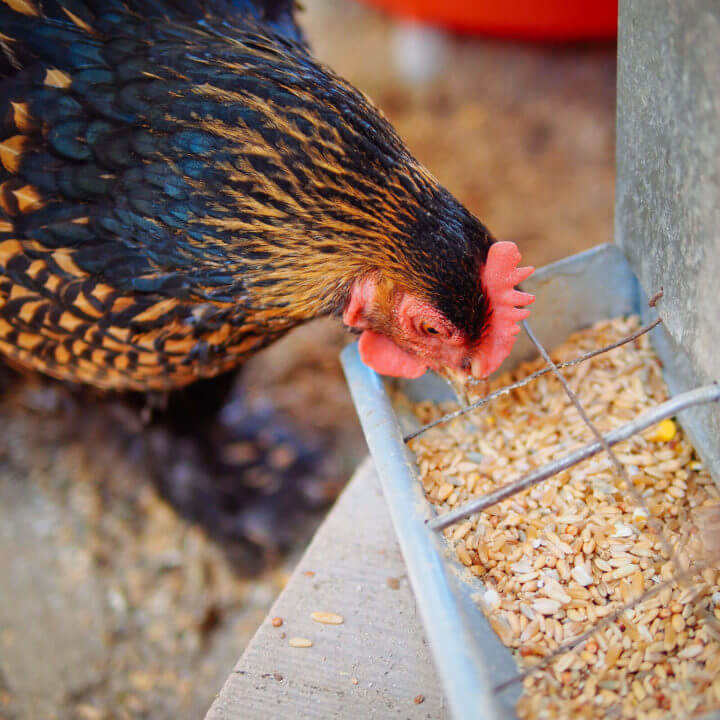
Garden Betty's homemade whole grain chicken feed just got better. This new recipe is corn-free (as well as soy-free) and makes the perfect feed for your favorite layers.
Ingredients
- 4 cups oat groats
- 4 cups black oil sunflower seeds
- 4 cups hard red wheat berries
- 2 cups soft white wheat berries
- 2 cups triticale berries
- 2 cups rye berries
- 2 cups millet
- 2 cups sesame seeds
- 1 cup flax seeds
- 1/2 cup brewer’s yeast
- 1/4 cup kelp granules
- Free-choice oyster shells (or crushed eggshells)
- Free-choice grit
Instructions
- Combine all of the ingredients, except the oyster shells and grit, in a small bucket.
- Fill your feeder with the mixed-grain feed, or store the feed in a pet food container or a galvanized steel bucket with a lid.
- Offer the oyster shells and grit in separate small feeders for your chickens to eat as they wish.
This post updated from an article that originally appeared on April 15, 2013.


